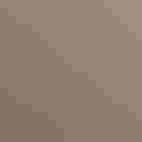Ruddy Turnstone
At a Glance
A chunky, short-legged sandpiper, wearing a bright harlequin pattern in summer, dark brown in winter. The Ruddy Turnstone nests on high arctic tundra of North America and Eurasia, and winters along the coastlines of six continents. In migration it is seen mainly along the coast, although numbers may stop over at favored points inland, especially along the Great Lakes.
All bird guide text and rangemaps adapted from Lives of North American Birds by Kenn Kaufman© 1996, used by permission of Houghton Mifflin Harcourt Publishing Company. All rights reserved.
Category
Sandpiper-like Birds, Sandpipers
IUCN Status
Least Concern
Habitat
Coasts and Shorelines, Freshwater Wetlands, Lakes, Ponds, and Rivers, Saltwater Wetlands, Tundra and Boreal Habitats
Region
Alaska and The North, California, Eastern Canada, Florida, Great Lakes, Mid Atlantic, New England, Northwest, Plains, Rocky Mountains, Southeast, Southwest, Texas, Western Canada
Behavior
Direct Flight, Erratic, Rapid Wingbeats, Running
Population
600.000
Range & Identification
Migration & Range Maps
Usually scarce inland in migration. Winters on coasts from United States to South America, southern Africa, Australia. Birds from western Alaska winter from west coast of North America to Australia and New Zealand, some making long overwater flights from Alaska to Hawaii and then on to southwest. Birds from northern Canada winter on coasts from United States to southern South America. Those from northeasternmost Canadian islands (and Greenland) winter in western Europe.
Description
8-10" (20-25 cm). Chunky, with short orange legs, short bill. Unmistakable pattern in breeding plumage, with bright reddish back, black chest patches, black and white face. In fall and winter, dull dark brown above, with dark chest pattern.
Size
About the size of a Robin
Color
Black, Brown, Orange, Red, White
Wing Shape
Pointed, Tapered
Tail Shape
Rounded, Short, Square-tipped, Wedge-shaped
Songs and Calls
A metallic but musical netticut or kek-kek.
Call Pattern
Flat, Undulating
Call Type
Chatter, Chirp/Chip, Rattle, Trill
Habitat
Beaches, mudflats, jetties, rocky shores; in summer, tundra. Mostly coastal in migration and winter, favoring rocky shorelines, rock jetties, or beaches covered with seaweed or debris. May also feed on mudflats or on plowed fields near coast. Nests on open ground in arctic, including wet tundra and dry rocky ridges.
Sign up for Audubon's newsletter to learn more about birds like the Ruddy Turnstone
Behavior
Eggs
4, sometimes 2-3. Olive-green to olive-buff, blotched with dark brown. Incubation is by both sexes (but female does more), 22-24 days.
Young
Downy young leave nest shortly after hatching. Both parents care for young at first, but male takes greater role, and female usually departs before young are old enough to fly. Male leads young to food at first, but young feed themselves. Age at first flight 19-21 days, usually independent thereafter.
Feeding Behavior
Best known for habit of inserting bill under stones, shells, etc., and flipping them over to find food underneath. Several birds may work together to overturn a larger object. Often probes under seaweed or debris. Can be a nuisance in tern colonies at times, including on wintering grounds on Pacific islands, where it may puncture and eat the contents of many eggs.
Diet
Variable, includes insects, crustaceans, mollusks. In breeding season mostly insects, also spiders, seeds, berries, moss. At other seasons eats crustaceans (including barnacles, crabs, amphipods), mollusks, worms, sea urchins, small fish. Will eat carrion and will eat food scraps thrown out in garbage dumps. Sometimes eats eggs of other birds.
Nesting
In courtship, male pursues female, in the air and on the ground. Male may approach female in hunched posture, raising and lowering tail. Nest site is on ground, either in the open or concealed among rocks or under plants. Nest (built by female) is shallow depression with slight lining of leaves.
Conservation
Conservation Status
Common and widespread. Very wide wintering range and remote breeding range help to ensure survival.
Climate Threats Facing the Ruddy Turnstone
Choose a temperature scenario below to see which threats will affect this species as warming increases. The same climate change-driven threats that put birds at risk will affect other wildlife and people, too.













